A traditional aromatic, flavourful, homemade rasam powder spice mix from Tamizh cuisine. Made by dry roasting various spices including coriander/dhania seeds, dry red chilies, black peppercorns and cumin seeds, and grinding them to powder as in the instructions in the recipe below.
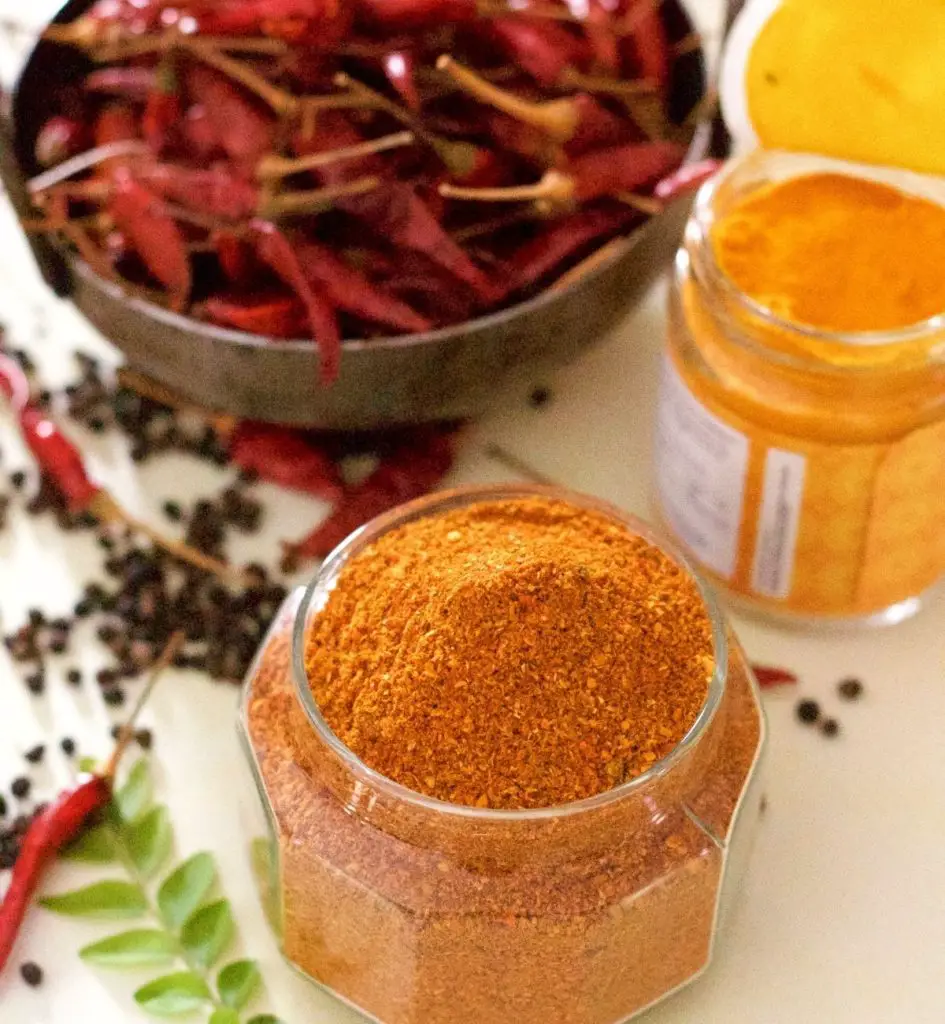
I have been following my mother's recipe for rasam powder, and I prefer it to the many store bought branded ones I have tried over the years (when I was not in the habit of making spice powders from scratch in my kitchen). Now I make it once or twice a year, storing the bulk of the spice in an airtight container that then goes into the fridge. I keep a small quantity, about one cup, in a tightly closed jar in my regular spice shelf for ready use when I make rasam, which is usually about once a week.
This particular batch of powder I made recently, was especially pungent because of the gorgeous dry red chilies that my partner Venkat sent from Hindupur in Andhra Pradesh. I had to reduce the volume of chili powder in the recipe by half, to balance the heat of the chilies.
Ingredients For Traditional Tamil Rasam Podi
There are many varieties of rasam as well as variations to the rasam powder. The flavour and therefore the ingredients for the powder differ from region to region and between communities and even families. While my recipe is from the cuisine of the Tamizh Iyer community, it could well differ from others of the same community as each family has its preferred recipe, often handed down from one generation to another. While the broad list of ingredients is usually the same, changes in proportions and additions or deletions of an ingredient or two or a tweak in the process, may occur.
Coriander seeds/dhania and dry red chilies make up the bulk of the spice mix. Others, in smaller quantities are cumin seeds, mustard seeds, black peppercorns, turmeric powder, some lentils, asafoetida and curry leaves.
While several of the ingredients are the same, with dry red chilies and coriander seeds forming the main components, usually fenugreek/methi seeds and sesame/til seeds added in sambar podi, are not added to rasam podi. Cumin/jeera seeds are included in rasam powder but not in sambar powder.
The better the quality of the ingredients, the more flavourful the spice mix. Hence select dry ingredients of good quality that have been maintained in adequate storage conditions.
The first step is to clean the ingredients such as dry red chilies, coriander seeds by removing any stones or twigs. It is recommended to spread them out to dry in the sun for at least a day, if possible.
Roasting the ingredients, as in the recipe below, removes moisture and maintains the freshness of the powder. Ingredients are to be each roasted separately, without oil, on a dry hot pan, on low heat, stirring to ensure they do not overheat and char/blacken, as that will affect the taste of the rasam.
The recipe gives
Roasting the ingredients, as in the recipe below, removes moisture and maintains the freshness of the powder. Ingredients are to be each roasted separately, without oil, on a dry hot pan, on low heat, stirring to ensure they do not overheat and char/blacken, as that will affect the taste of the rasam.
The recipe gives the proportions for the ingredients. However these should be adjusted based on the ingredients themselves. For example, while the recipe provides for equal volumes of chili powder to be mixed with the other powdered ingredients, the volume of chili powder may need to be reduced if the chili is high on the heat quotient.
Karnataka's Bydagi chili may have more colour than potency and hence the 1:1 ratio would be suitable. The chilies from Andhra Pradesh such as the Hindupur chili and Guntur Sannam chili or Madhya Pradesh's Ellachipur Sannam chili are much more pungent.
It is recommended that after grinding the ingredients, some of the chili powder be kept in reserve, to be added, if required, after tasting the rasam from the first spice mix. Excess of chili powder can overwhelm the flavour of the rasam and hence needs to be balanced with the other ingredients. 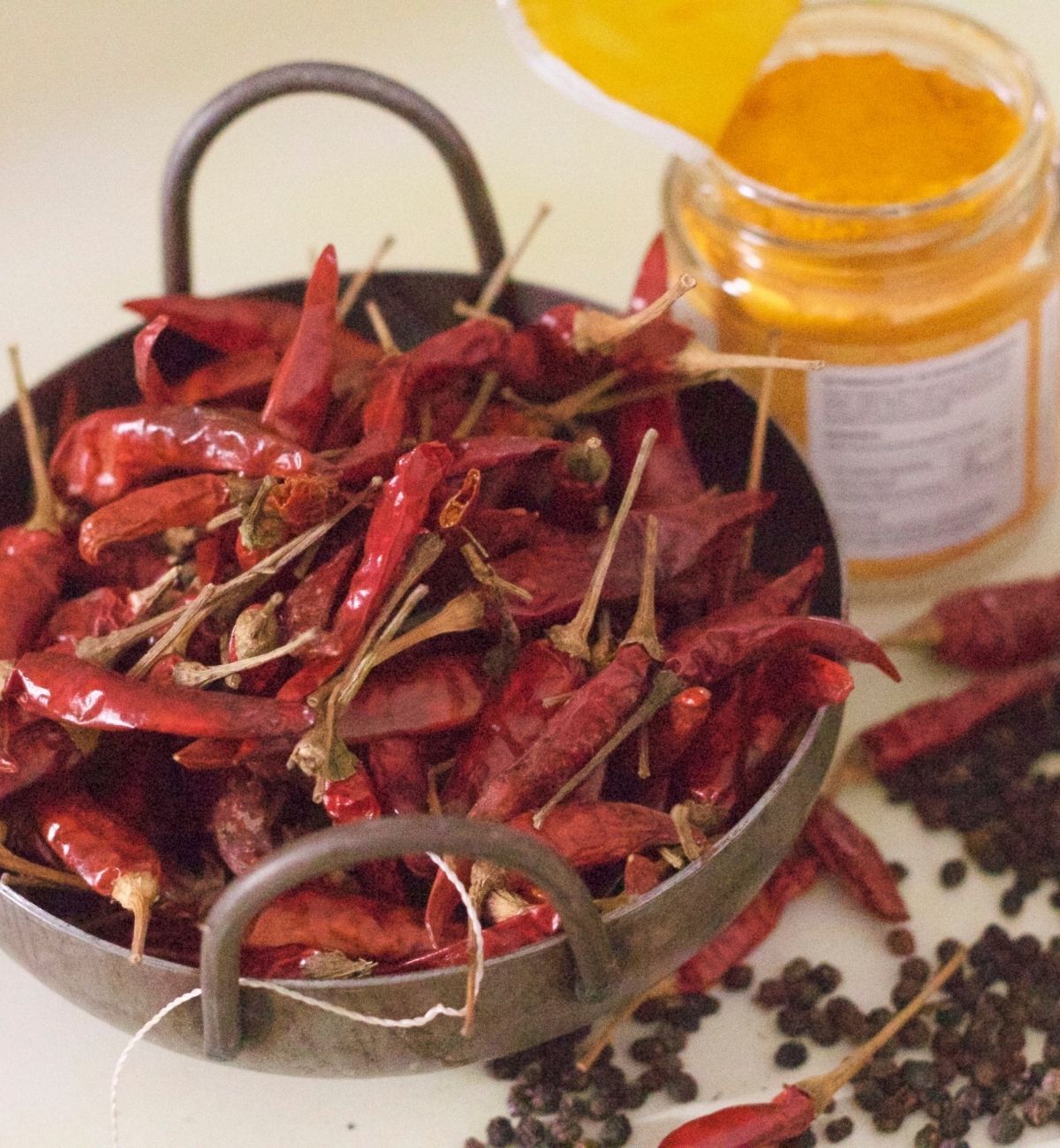
Store the bulk of the powder in a dry and airtight container, kept aside so that it is not opened frequently, thereby retaining flavour and freshness.
This may be kept in the fridge to safeguard it from insects and pests and will usually stay good for a year.
A small quantity for ready use for about a month may be stored in a small tightly closed jar in your regular spice shelf.
Always use a dry spoon to take the powder out as moisture and damp can spoil the rasam powder.
How to use this Recipe:
In the recipe below I have given two sets of measurements. The first set of measurements given before each ingredient, will yield about 4 heaped cups of the Rasam Spice Powder. The next set of measurements given in brackets, at the end of the details for each ingredient, gives a much larger yield (more than double) though I have not found it necessary to make such large quantities.
Some Rasam Recipes On This Blog:
"Recipe"
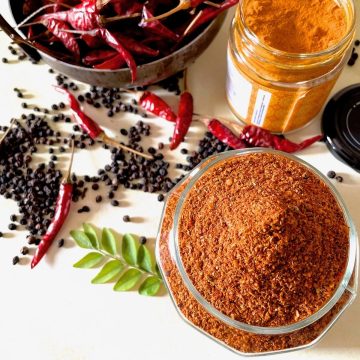
Homemade Rasam Powder
Ingredients
- 200 gms Dhania seeds/ Coriander seeds ( 500 gms )
- 200 gms Dry Red Chilies (without stalks) (500 gms)
- 10 gms Thowaram Paruppu/ Toor Dal Pigeon pea lentils- ¾ tablespoon (2tbsp)
- 10 grams Kadalai Paruppu/ Channa dal/ Bengal gram lentil - ¾ tablespoon (2tbsp)
- 7 grams Milagu/ Kali Mirch/ Black peppercorns - ¾ tablespoon (2 tbsp)
- 5 grams Jeera/ Cumin seeds - ½ tablespoon (1 tbsp)
- 1 gram Hing/ Asafoetida - ½ teaspoon (1 tsp)
- 1 sprig Curry leaves (dried or fresh) 1 large handful
- 6 grams Mustard -½ tablespoon (1 tablespoon)
- 1 gram Haldi/ Turmeric powder - ½ teaspoon (1 teaspoon)
Instructions
One Day Before You Make Rasam Powder:
- Take whole spices and condiments (sabut), dry them as in step 2 below and then follow the process.
- If you have access to a sunny balcony or terrace, spread the ingredients separately on clean sheets of plastic or newspaper, for at least one day, letting them soak in the sun. Remove before the sun goes down and the air becomes chill. Check the ingredients for small stones, sticks etc. Remove the stalks from the red chilies.
Roasting The Ingredients:
- Heat a suitable pan, and dry roast each type of ingredients separately for a few minutes on low to medium flame, taking each one to separate dry dish after roasting and allowing them to cool before grinding. No oil is to be added for roasting.
- Roast the Coriander seeds for about 3 minutes, stirring frequently.
- Pepper is to be roasted for 1 minute, again on low flame.Mustard to be roasted for 30 seconds.The lentils/ dals should be sautéed together on a low flame for less than a minute, till they darken slightly. Watch out while doing this as they can quickly burn and char to black.
- The dry red chilies need to be roasted for 3 minutes, stirring frequently. They will give a pungent aroma while being roasted. I prefer to wear a close fitting mask while doing this, washing my hands and face with soap and water after handling the chilies for removing stalks or for roasting or grinding them.
- The jeera/ cumin seeds should be roasted for only about 30 seconds and removed before they begin to blacken. Curry leaves, if fresh, to be roasted for 2-3 minutes till most of the moisture has been removed.The turmeric powder is to be sautéed dry for a few seconds, and I do this last, after all the other items have been roasted, along with hing/ asafoetida powder.
Grinding/ Powdering The Ingredients
- Once the roasted ingredients have cooled, you need to grind them. Coarse grinding is sufficient, except for the chilies, as per instructions below:
- Grind the coriander seeds first. Add the dals/ lentils and grind.Add all the other ingredients except for the red chilies, and grind to a coarse powder. Remove from the mixer/ processor, mix well with a dry spatula or spoon, and keep aside.
- Grind the red chilies as fine as you can get them. Remove from processor.
To Mix Rasam Powder Spice Mix
- Note: Please read the post above for this recipe, for What special Care is to be taken for Making The Powder. This will explain the proportion of Chili powder to Coriander and other spice mix. For dry red chilies that are of medium spice/heat, the following proportion is recommended. For more pungent varieties, the chili powder volumes are to be reduced.Mix equal quantities of the red chili powder and the coriander-spices mixed powder. Mix well so that all the spices blend together completely.
- The rasam powder is used for making rasam varieties such as Tomato Rasam, Pineapple Rasam, Neem flower Rasam etc. For recipes, please see the post above.



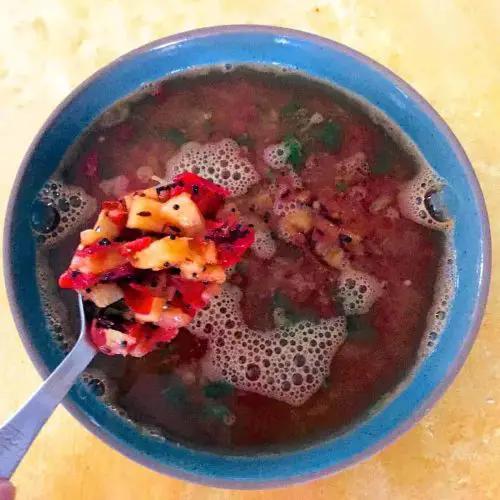
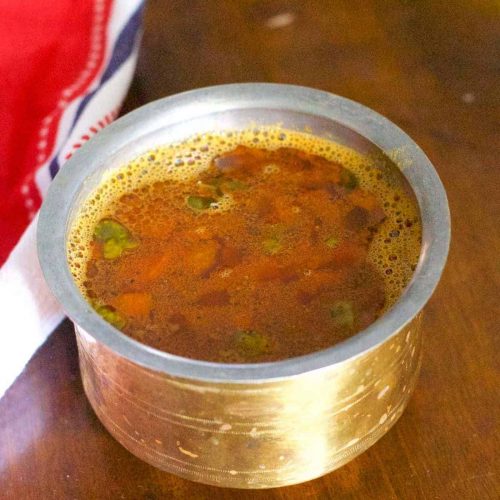
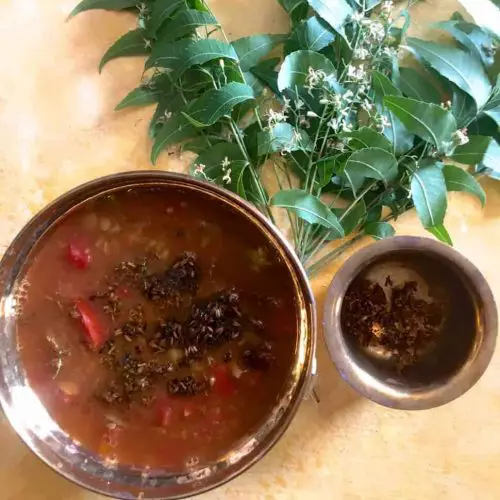
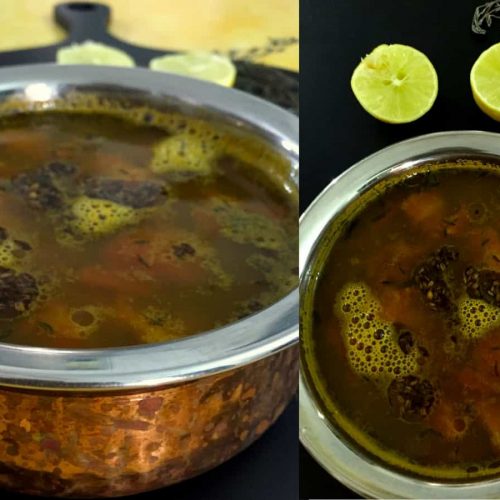
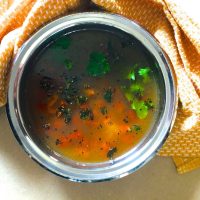
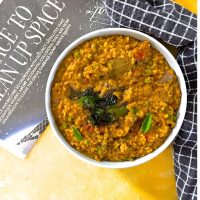
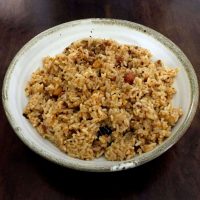
Comments
No Comments